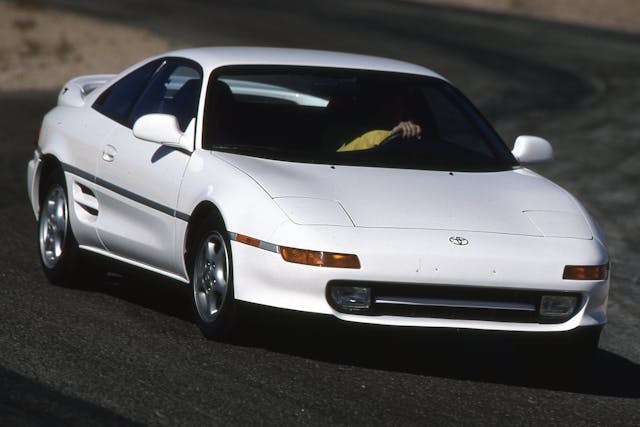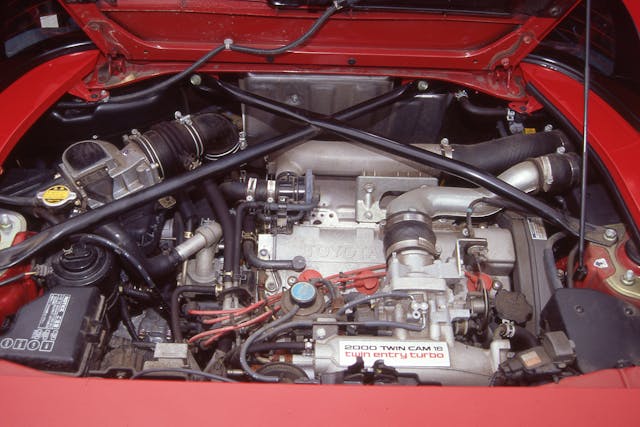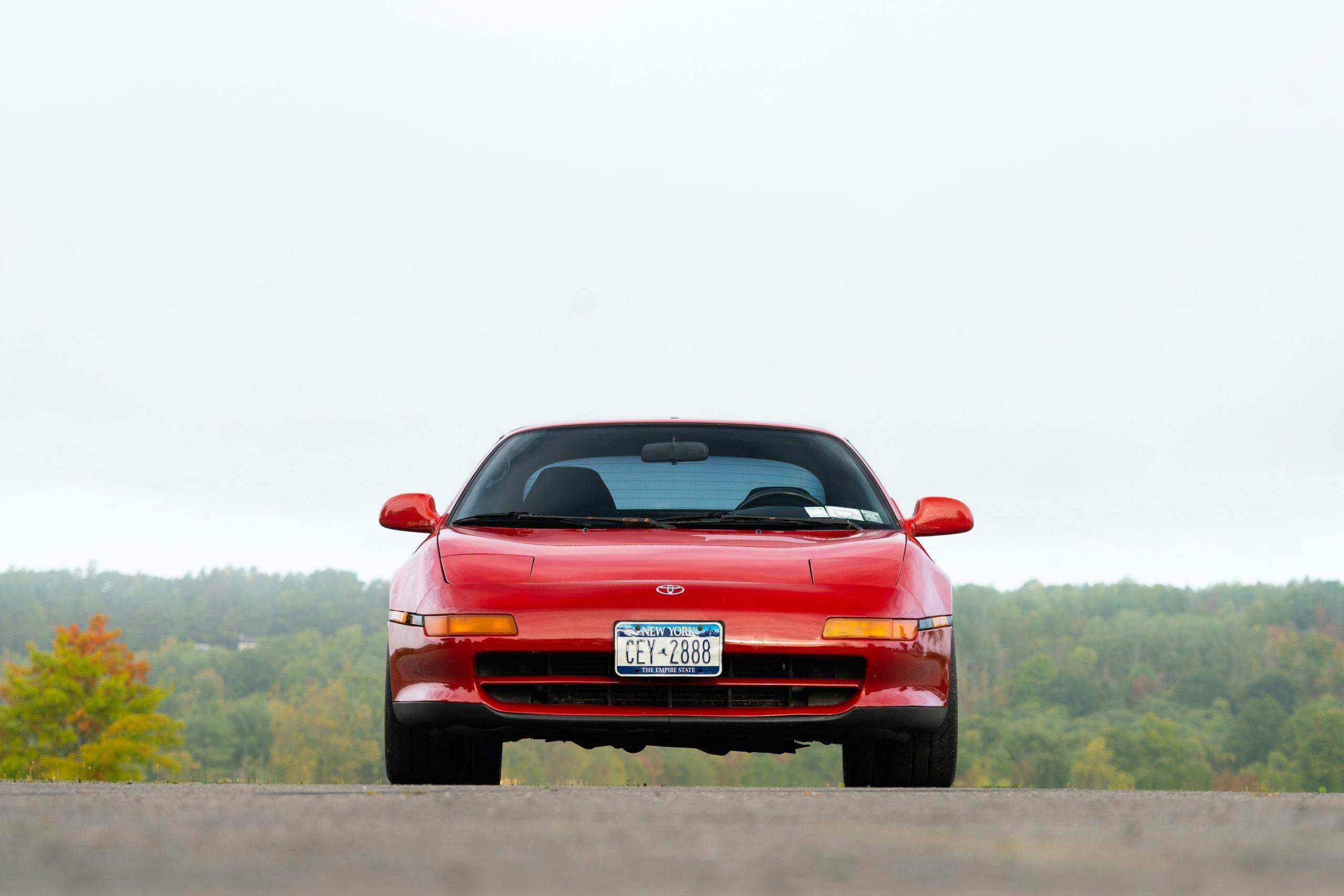Your handy 1991–95 Toyota MR2 (MKII) buyer’s guide
Pop-up headlights at the front, T-top roof in the middle, and a big, sweeping wing at the back. When it comes to ’90s sports car charm, you can’t do much better than the second-generation MR2. The SW20 as it’s commonly known, or MKII more familiarly, is a product of a simpler sports-car era. This mid-engine featherweight gets by without traction control, ABS, or power steering. Full disclosure: I own a 1991 SW20, and in my eyes, simpler is most definitely better.
History of the Toyota MR2 MKII
The MKII was introduced in 1990 for the 1991 model year, replacing the venerable first-gen MR2. Commonly called the AW11, that early MR2 (MidShip Rear-drive 2-seater) was a wedgy and quirky take on the affordable sports car theme. The second-gen smoothed off the edges, bringing a vastly more modern look to the table. (More modern for 1990, anyway.)
The MKII didn’t just look more mature. It grew up in other ways, too; 8.7 inches longer and 1.3 wider, the SW20 gained some 300 to 600 pounds on its predecessor, depending on configuration. Considering the original car weighed as little as 2300 pounds, that’s substantial.

Two engines were available. On the lower end was the 5SFE, a 2.2-liter inline-four offering 130 horsepower and 145 pound-feet of torque, sitting longitudinally behind the driver and breathing in through the bisected vent just aft of the left door. That naturally aspirated engine offered a very torque-forward power delivery, not unlike the first-generation Scion FR-S/Subaru BRZ. You could rev it up to 6250 rpm if you liked, but there wasn’t much point.
The turbocharged engine is far and away more desirable. The 2.0-liter four-cylinder (dubbed 3S-GTE) offered a nice, square 200 hp and 200 lb-ft of torque. That extra punched changed the dynamic equation in a big way. As an early ’90s turbocharged engine, throttle response was not its strong suit, but you can’t argue with the numbers.
Neither can you argue with the car’s handling reputation. Mention you drive a MKII MR2 and it won’t be long before someone asks you whether the lift-off snap oversteer is truly as bad as everyone says it is. “Yes, it was really that bad,” confirms Justin Burnash, a former MR2 tuner and current seller of MR2 parts, who is Co-Owner of the car giveaway and apparel site PrimeDriven.com. “Toyota revised the rear suspension geometry in 1993 and increased wheel size from 14 inch to 15 inch and all of this made a substantial improvement.” According to Justin, however, the MR2’s bad rep is more the fault of the buying public than the car itself: “People who normally drove Corollas and Civics were all of a sudden driving MR2s like they drove their underpowered FWD commuter cars and chaos ensued.”

As the ’90s wore on, the MKII MR2 evolved in other meaningful ways. It gained an optional limited-slip differential in 1993. Transmission synchros, notorious for causing crunchy shifts on the earlier cars, were up-rated, too. In 1994, the car got a slight visual refresh, cleaning up the rear tails and trimming the wide rear wing into something a bit more pert. Then, after 1995, the car was gone from North America, living on in the Japanese market for a few more years.
What to know before buying an MR2 MKII
So which is the ideal MKII configuration? Opinions vary. Aaron Bunch, owner of ATS Racing and a long-time MR2 tuner and owner, reckons it depends on your priorities: “For years, the 1993 Turbo was the best deal. It has the updated rear suspension (I would not personally call it upgraded), optional limited slip differential, and the bigger brakes. But it lacked the updated taillights and solid side moldings of the more expensive ’94–95 Turbo cars. The ’93 isn’t as rare as the [later cars] either so that kept prices lower, too. But condition is more important than anything. I would take a nice 1991 over a rough 1993.”
Despite the exotic layout, these are still 1990s Toyotas, which means no major reliability issues beyond those dodgy transmission synchros. “There were no actual problems with MK2 MR2s that weren’t owner-inflicted through neglect,” Burnash says. “Things to look out for when buying used examples today are the same as any car.”
If you’re looking for a driver—something to just enjoy or tune—the earlier cars are the way to go. True to the MR2’s brief, they’re simpler and lighter. For collecting, Justin Burnash recommends seeking out the later models: “Ultimately, the nicest-shifting and driving cars with the nicest interiors, ride quality, and most benign handling (relatively speaking) are the loaded late-model cars: 1994 and 1995. Turbo models sell for double what normally aspirated models sell for.”

What to pay for an MR2 MKII
Valuations are creeping up. The MR2 has always been a bit of an under-appreciated car from a collectibility standpoint, despite selling a relatively scant 33,111 cars in the U.S. and Canada between 1990 and 1995. By way of context, that’s fewer Miatas than Mazda sold in 1990 alone, but roughly three times the cumulative sales volume of the MR2’s corporate sibling, the MKIV Supra.
If you want a taste, MR2 prices are still quite reasonable in the grand scheme of things. A 1991 non-Turbo in #3 (Good) condition has a average value of $11,300, up 13 percent in the past year, while a similar-condition 1995 Turbo will run you about $21,800, up 4.8 percent. Keep in mind that an automatic transmission deducts 15 percent from the average value, and a limited-slip diff adds $2000.
It’s easy to look at the trajectory of Supra prices with high expectations when pondering the state of the MR2 market, but Burnash warns against stumbling into that trap. “I hesitate to say never with anything in a world of COVID and six-figure Supras, but at the end of the day the MR2 is the baby brother,” he says. “It will never hit Supra numbers.”
Bunch hopes the MR2 never does. “If the values of original stock cars skyrocket and everyone focuses on keeping stock engines and stock turbos, that’s almost tragic.”
Driving impressions: The mods make my 1991
Why tragic? Because the MR2 is such a tunable car. Take mine, for example. What started off as a humble, 130-horse, 5SFE-powered MR2 is now putting down closer to 300 hp thanks to a fourth-generation 3S-GTE engine swap. That much power easily overwhelmed the stock braking system, so I installed a Wilwood big brake kit with a set of adapters, custom-made for the SW20 by a company called Wilhelm Raceworks, which offers all sorts of tempting upgrades. A set of coilovers improved the tired stock suspension, while a staggered set of 17-inch Enkei RPF1 wheels and sticky tires provided a massive upgrade over the stock, 14-inch units.

Originally, my car was torquey and fun but, honestly, pretty gutless. Get on the power hard and it made a very nice sound, and the instant throttle response was engaging, but you had little incentive to rev it out. It struggled to put down what little power it had thanks to the lack of a limited-slip differential. Powering hard out of corners, particularly on an autocross circuit, would spin up the inside tire. And, as the car aged, finding anything resembling a performance-oriented tire suitable for the car’s 14-inch wheels became difficult.
My car is a monster these days. That new motor, borrowed from a Japanese-market Toyota Caldina, changes the MR2’s character completely. There’s less lag than in a stock MR2 3S-GTE, but it’s still a good one-count between pedal hitting the floor and the power mashing my head into the car’s striped, velour seats.
Even with the bigger wheels, stickier tires, upgraded suspension, and more aggressive alignment, I still need to be extremely careful applying power mid-corner. I have a limited-slip diff now, too, but with all that power it just means I spin both tires instead of one. This being a mid-engine car, the rear-end steps out in a hurry and catching it requires fast hands. My car’s unassisted manual steering has an extremely lazy 20.5:1 ratio, demanding opposite-lock in dollops rather than dabs. A firm grip is essential on that skinny, shiny plastic steering wheel—again a side-effect the unassisted rack. However, the reward for that upper-body workout is a delightful feel unlike anything in modern cars.

A wheelbase of 94.5-inches makes the MR2 MKII a whopping seven inches shorter than a modern GR86. Pulling up next to a modern F-150 at a traffic light is enough to make you fear for your life, but escape traffic, find a flowing, twisty road, and the MR2 is an absolute delight. On a summer day, T-tops stowed in their bags behind the seats letting the sun and wind flow in, aftermarket blow-off valve chattering like a hopped-up hyena behind my head with every lift of the throttle, and three-inch Berk exhaust screaming when I get back on it, it just doesn’t get much better.
An MR2 is for enjoying
My advice would be to find yourself a good example while they’re still affordable, and to consider leaving some room in for a few choice upgrades. Driving it with enthusiasm is half the fun of a car like this, and done right this is a car that can consistently deliver big grins.

Check out the Hagerty Media homepage so you don’t miss a single story, or better yet, bookmark it.








I’ve had my 1991 NA sw20 for over 24 years now. I’ve done some modifications but really nothing to the engine as the NA options are minimal with little gains. If that engine were to fail I’d love to have a 2GR v6 installed. That would be an expensive dream though.My car still only has 120k miles.
I was hopeful when I read about “the biggest seller of MR2 parts in the world” because I have been hunting for struts for mine. I did not find any car parts at PrimeDriven.com.
Hi Mike — Apologies for the sub-par wording of that section. The parts side of Prime’s business is now linked in the article, and I removed the claim of ‘biggest seller’ since we cannot independently verify that. If you’re looking for more parts store options, here are a couple of Reddit threads with comments from other owners:
https://www.reddit.com/r/mr2/comments/wfjvze/just_recently_bought_a_mr2_and_need_some_good/
https://www.reddit.com/r/mr2/comments/xgrj6s/what_are_good_mr2_websites_for_parts_ik_theres/
These MR2s, Miatas and First Gen Honda Insights will be the sweet spot to buy today because they will be like trying to buy a muscle car era vehicle pretty soon, as in very expensive and hard to find a good one. They have that same simplicity, hands on appeal and experience that has been buffed, blimped and complicated out of anything more modern.
I love the new mr2 they may come out with.i love my 1991 mr2. I hope the USA gets the new mr2